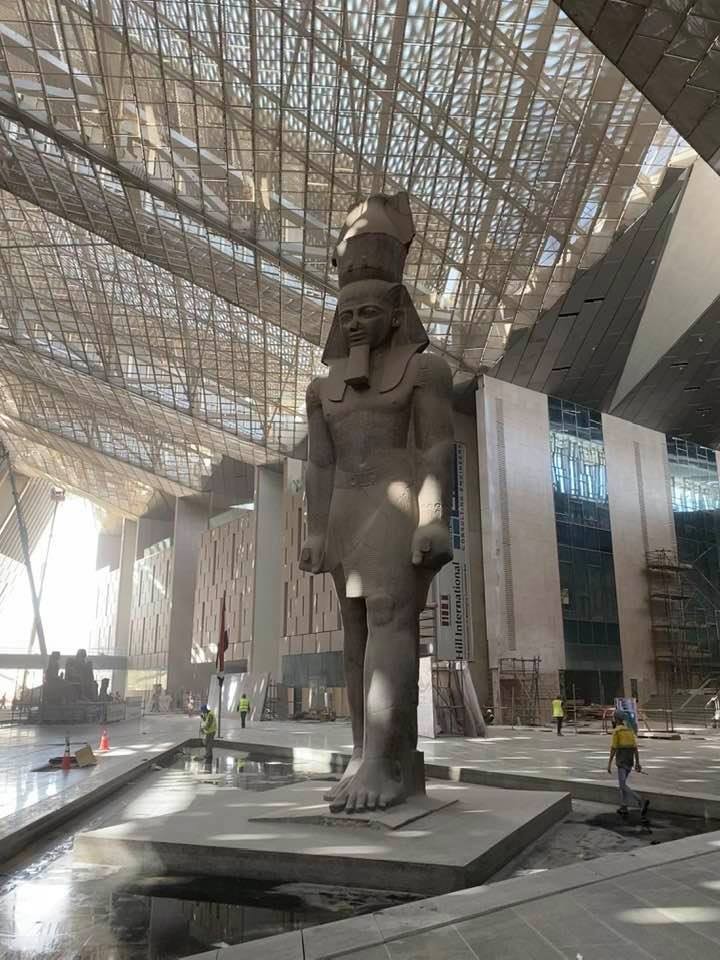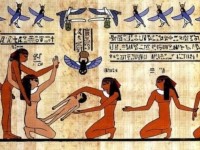It baffles me that no matter how much research I do, this question remains one of the top ones. The answer is simple and based on genetic testing. You yourself can look up the test results. You look for genetic markers and find out where they are and have been most common. Then you get a better idea as to what the ancient Egyptians may have looked like.
When talking about "the ancient Egyptians", which dynasty and era are you referring to?
No idea?
Get an idea first.
We are referring to time spans of thousands of years and within such time span, genetic makeup of a population can significantly alter.
I am however happy to receive such questions from some people trusting me enough to put it to rest. After all, not everyone has time to look such up. They are often subjects to soundbites, but too awake to listen and follow them. So let me start answering the question little by little:
a) Who cares?
This is my top answer. Those interested in genetics will know already what the answer is. Those who wonder and guess are not interested in learning. This is not a subject matter you see taught by serious people. No serious scientist will spend much time on it other than put it to rest briefly as I am doing it here. In other words: If you care, there is something wrong with you. Not with the ancient Egyptians, regardless of their complexion.
__________________________________________
Let's take a break before we move on. Shame on you if you are leaving now. Shame on you for not facing reality, whatever it may be. It's similar to the debates if Jesus was black or white. If you cannot stand above such debates, you are not the person I am speaking to for sure. And I don't care if Swedish churches made him out to have blond hair and blue eyes. It's a battle of nonsenses and I prefer the people staying far away from those sidelines.
b) Different dynasties - different families - different ancestries
You will be surprised to learn about just how different the families were ancestry wise and let's just say, that just like India, Egypt during that time was subject of heavy immigration from all directions. Some came with battle axes, others as nomads with families looking for a better future. The face of Egypt changes again and again.

So when someone asks "were THE ANCIENT EGYPTIANS black or white?" without clarifying which group in which region during which era, you already know the person asking is not worth discussing things with and hopefully this is the one message everyone will get out of this post.
Now that most people who started to read already abandoned the post assuming it is one of those racist posts, it is time to become serious knowing we have the right audience left:
c) Heterozygous results
Let's start with
1) King Tut and his dynasty
According to recent DNA test results revealed, King Tut was y-DNA haplogroup R1b. Remember that one? It is most common among Celtic groups. In Ireland, Wales, Catalonia, Basque Country, Scotland, also Holland. It originates from the Yamnaya people.
The Yamnaya culture, also known as Yamna culture, Pit Grave culture or Ochre Grave culture, was a late Copper Age to early Bronze Age archaeological culture of the region between the Southern Bug, Dniester, and Ural rivers (the Pontic steppe), dating to 3300–2600 BC.

This is around the black sea region where blue eyes likely saw their first mutation around 7k ybp.Red hair was also common among the Yamnaya as it is in their descendants, the Celts.
King Tut had red hair. He also had blood type A2, common among the Assyrians.
Would he be considered white or black these days?
Probably white. Possibly mixed. But not likely mixed with African, but Asian as his Yamnayan ancestors likely traveled through India and mixed with locals along the way.
2) Ramses II and his dynasty

They say his blood type was B- and that he carried HLA-B27, common among the Saami people of Lappland and carrying immunity to HIV. But let's see if that actually makes sense, because his y-DNA haplogroup was tested as E1b1a. Not E1b1b, the Berber marker, though somewhat related, but their southern sub-Saharan neighbor.
The origin of that marker was likely the Horn of Africa and to this day, it's common in Ethiopia. Have you seen pictures of Ethiopian people? That is what Ramses II and his family likely looked like. Since most of you came here interested in the looks.
_____________________________________________________________________
So how about the population of ancient Egypt?
That will be part 2 of 3 coming up.
And let me assure you already: You will be in for a major surprise, whatever it is you may assume. Only those with an open mind open towards whatever the trust may be, will not be in shock.
To make sure that you will be alerted when it is published, subscribe to my blog.


Sherman, set the WAYBACK MACHINE for 1990-1991, Capitol Hill, Washington, DC. Between government jobs, I occupied my time with a journalism internship, where one of my tasks was to see if there was anything to that Ebonics / Negoroid Egyptians thing. After studying up on Egypt as much as I could, so I could formulate intelligent questions, I interviewed seven archaeologists, to include the then-curator of the NY Met. Museum of Egyptology. There was uniform consensus: Ancient Egypt consisted of 4 major ethnic groups and Negroid was one, but not a dominant one. If you look at Anwar Sadat, that's pretty much what the ancient Egyptians looked like. In short, they had their own olive-complected identity, so saying they were White (Aegean) or Black (Negroid) would be inaccurate. The responses were uniform in holding that the Ancient Ebonic Egypt was created from whole cloth and had no scientific / historical basis. The Egyptians *did* have Black Africans within their society, but not as a dominant Ethnic group. The big thing was, if you adopted their culture, observed their traditions, spoke their language and worshipped their gods, you could be welcomed into Ancient Egyptian society.